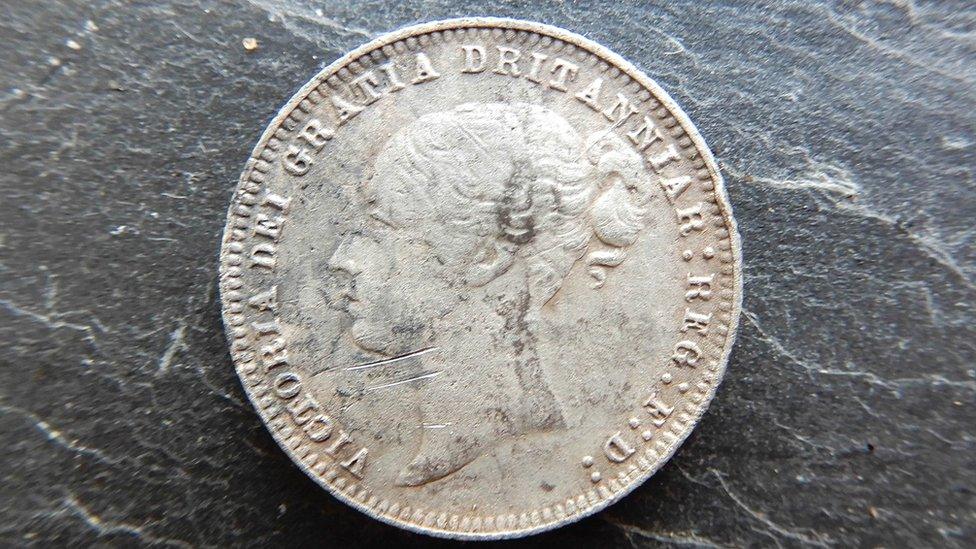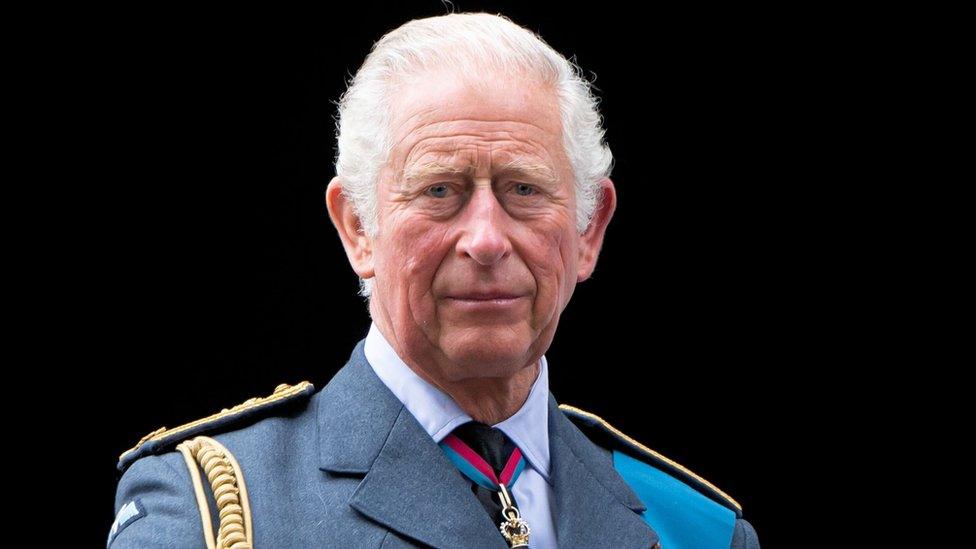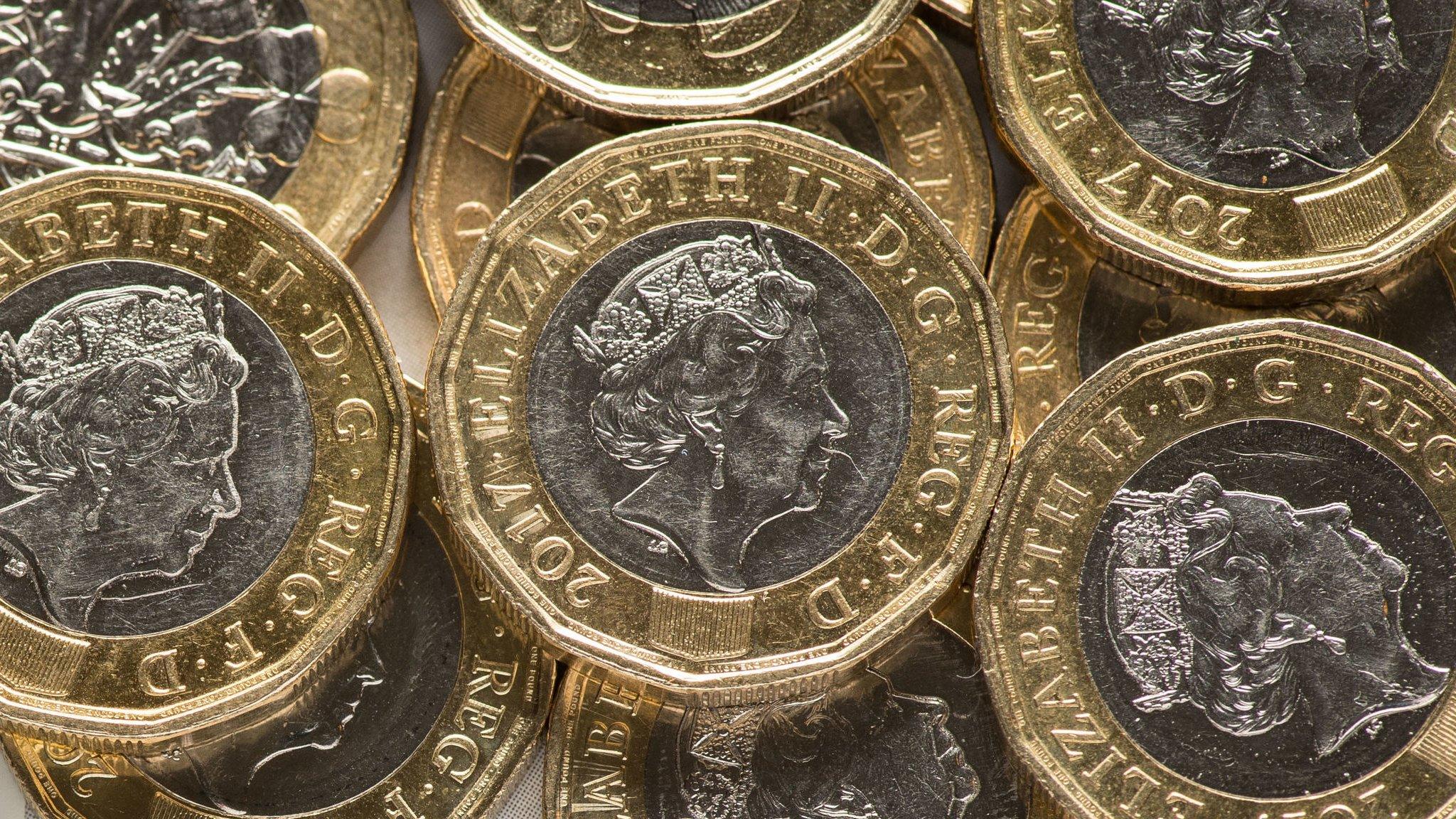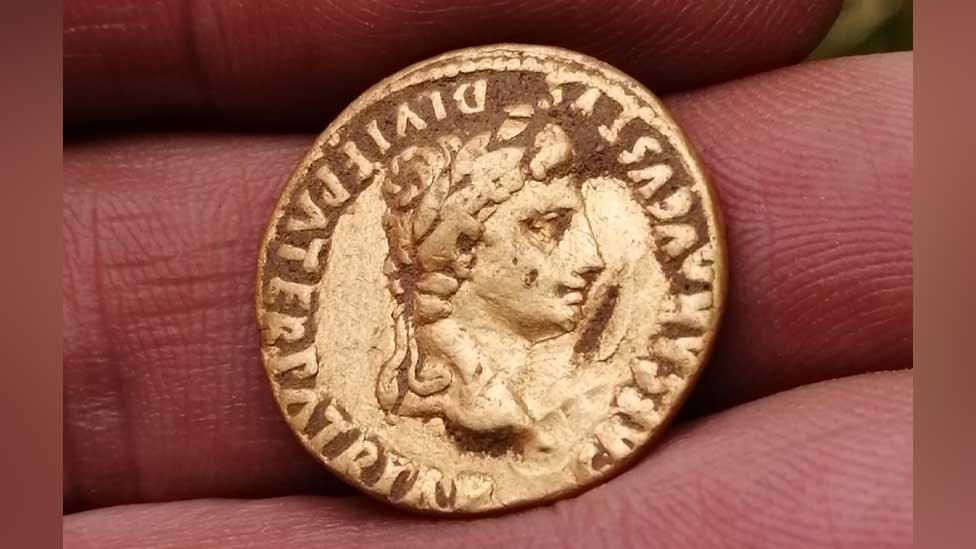Cambridgeshire misspelt Victorian silver sixpence a rarity, say experts
- Published

The coin bore the word "Dritanniar" instead of "Britanniar"
A Victorian silver coin uncovered by a detectorist turned out to be something of "a rarity" when the eagle-eyed finder spotted a spelling error on it.
The sixpence, dated 1878 and found in a Cambridgeshire field, bore the word "Dritanniar" instead of "Britanniar".
The erroneous "D" would have been an "embarrassment" for the engraver who stamped the coins, experts said.
The batch was sent to Cyprus and apparently returned later to be melted down, but some of the coins survived.
David Stuckey found the Victorian sixpence earlier this month and posted photographs of it on his Facebook page.
"It turns out the Victorian silver sixpence... is an extremely rare one," he said.
It came to the attention of numismatist and coin dealer Martin Platt, from Truro, Cornwall, who knew of the history of the coins from a book called A New History of the Royal Mint - a 1992 work collated by specialist Christopher Challis.

Most of the coins are thought to have been melted down
The coins, minted in 1878, were sent to Cyprus to settle arrears in salaries left behind by the departing Ottomans and to pay Indian troops who had been transferred from Africa to serve in Cyprus during the early stages of administration, Mr Platt said.
Britain had occupied Cyprus in 1878, although it remained nominally under Ottoman sovereignty. The island was annexed by Britain in 1914, after more than 300 years of Ottoman rule.
In the book, Challis wrote: "The discovery caused embarrassment and complaint, and blame fell on the resident engraver Thomas Minton, who had conveniently died before the error came to light."
When Cyprus introduced its own currency the following year, the coins were returned to the UK to be melted down, but some did get into circulation.
Mr Stuckey's find is "quite rare", Mr Platt said, estimating that "maybe a few thousand" of the coins with the striking error would have been minted.
Dr Adrian Marsden, a numismatist at Norfolk County Council, said errors of this type did not usually happen following the use of milling machines to engrave coins, introduced in the 17th Century.
"This is quite a glaring error and it would have been embarrassing to issue coins with a mistake like that," he said.
A Royal Mint spokesperson said: "Coins of this type did make their way to Cyprus around this time - the British High Commissioner for Cyprus actually highlighted the error in April 1879.
"From 1825 onwards, the British coinage was an Imperial coinage - legal tender in and circulated throughout the countries, territories and dominions of the British Empire which, from 1878, included Cyprus."
The spokesperson said both the intricate work of striking letters on to coins, coupled with poor lighting and working conditions, were "conducive to mistakes".
They added: "The [Royal Mint] museum has examined coins of a similar sort before and in very general terms would advise that they are fairly uncommon."
Nigel Mills, a consultant in coins and antiquities at specialist auction house Noonans, in London, said: "The Dritanniar sixpence of 1878 is a well-known rarity which were shipped to Cyprus."
Shown photographs of Mr Stuckey's coin, he said: "In this condition, it is worth around £150. If it was mint state it would be worth thousands of pounds."
Mr Stuckey has not had his coin valued, but said he would share any sum 50-50 with the owner of the land where he found it.

Find BBC News: East of England on Facebook, external, Instagram, external and Twitter, external. If you have a story suggestion email eastofenglandnews@bbc.co.uk, external
Related topics
- Published27 September 2022

- Published17 September 2022

- Published31 July 2022
